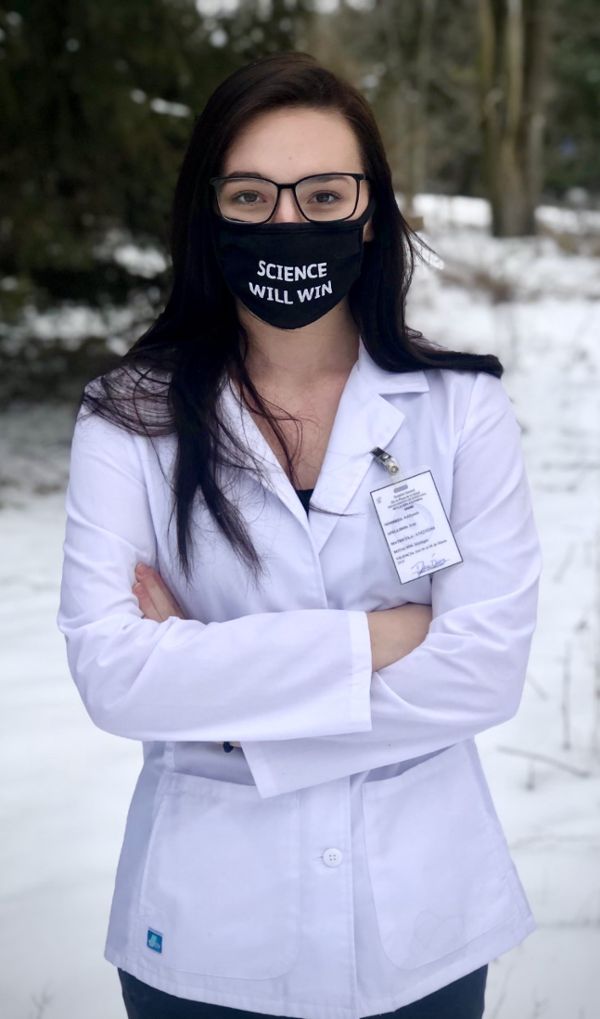Spartan plays a role in manufacturing the COVID vaccine
As COVID-19 vaccines roll out, Spartans continue their work on the front lines, testing, treating, and even manufacturing the vaccine. Addyson Ives, a biomedical laboratory science major from the Biomedical Laboratory Diagnostics (BLD) Program in the College of Natural Science at Michigan State University, is part of the biological operations team for Pfizer. She and her unit are on the front lines, manufacturing the COVID-19 vaccine.

“There are three shifts working 24 hours every day,” Ives explained. “Each day we cycle through different aspects of making the vaccine. The comparison I like to make is that if Pfizer were a restaurant, the BioOps unit are chefs. Our role is to receive the ingredients and make the product, which then gets shipped downstream.”
Operators are very hands-on. Ives and her team's responsibilities include not only producing the vaccine, but also taking sterile samples, suggesting and implementing ways to improve the process, and acting as subject matter experts who can train incoming employees on the process.
This vaccine is unique because it implements the use of mRNA (messenger RNA). Messenger RNA is a genetic material that contains instructions for making proteins. When the vaccine enters the body, the mRNA enters cells and instructs them to produce the "spike" protein found on the surface of SARS-CoV-2. The body recognizes the spike protein as an invader and produces antibodies to fight against it. If the antibodies later encounter the actual virus, they are prepared to recognize and destroy it before it causes illness.
While the focus now is on the SARs-CoV-2 vaccine, Ives suggests this process will impact future vaccines as well.
“The ingredients for the vaccine are public and the list is quite brief, which would hopefully indicate that future vaccines can be simplified, produced quicker, researched thoroughly, and be ready sooner,” she said.
Production of the Pfizer vaccine is increasing. According to a recent Pfizer press release, an additional 100 million doses of the companies’ COVID-19 Vaccine will be produced, bringing the total number of doses to be delivered to the United States to 200 million by July 31.
“I'm very proud of the work my team and I do,” Ives said. “As the vaccine becomes increasingly public, it brings me joy to have a positive impact on the population. It feels good knowing that for every day we work, more person-to-person interactions can happen with less risk and more comfort.
“The vaccine is new,” she added,” but the science behind it has been in the works for a long time. It's people like lab professionals and BLD alumni who do that research, behind-the-scenes, to provide these kinds of medical breakthroughs. Enjoying the work I did as a student, even on the hard days, led me to a post-graduation opportunity that I'm very proud of and happy to be doing.”
Ives credits her time at BLD for preparing her to face these challenges and take on these responsibilities. She hopes this opportunity will lead to future professional growth.
“For me, this is also a step in the right direction for a career in either healthcare or research,” Ives said. “My time at BLD prepared me with the scientific knowledge I needed not only to perform this kind of work, but also taught me how to interact socially/professionally with people like process engineers, quality control, and supervisors.”
Banner image: This 2020 photograph, captured inside a clinical setting, a health care provider places a bandage on the injection site of a patient. Credit: CDC.gov